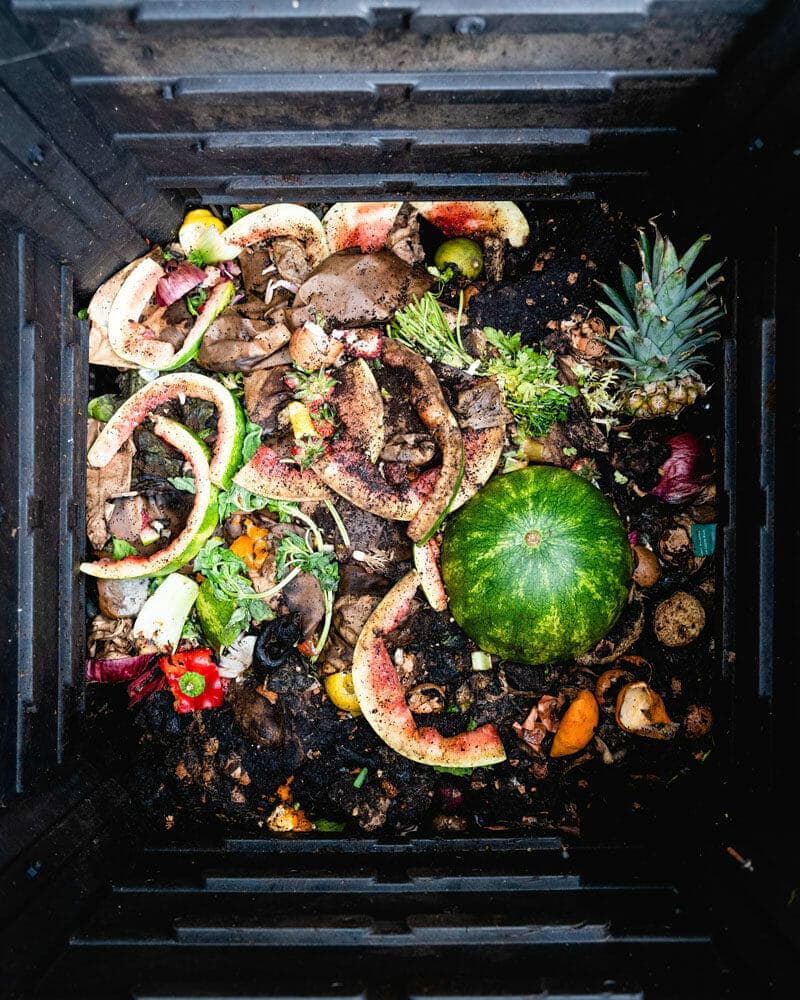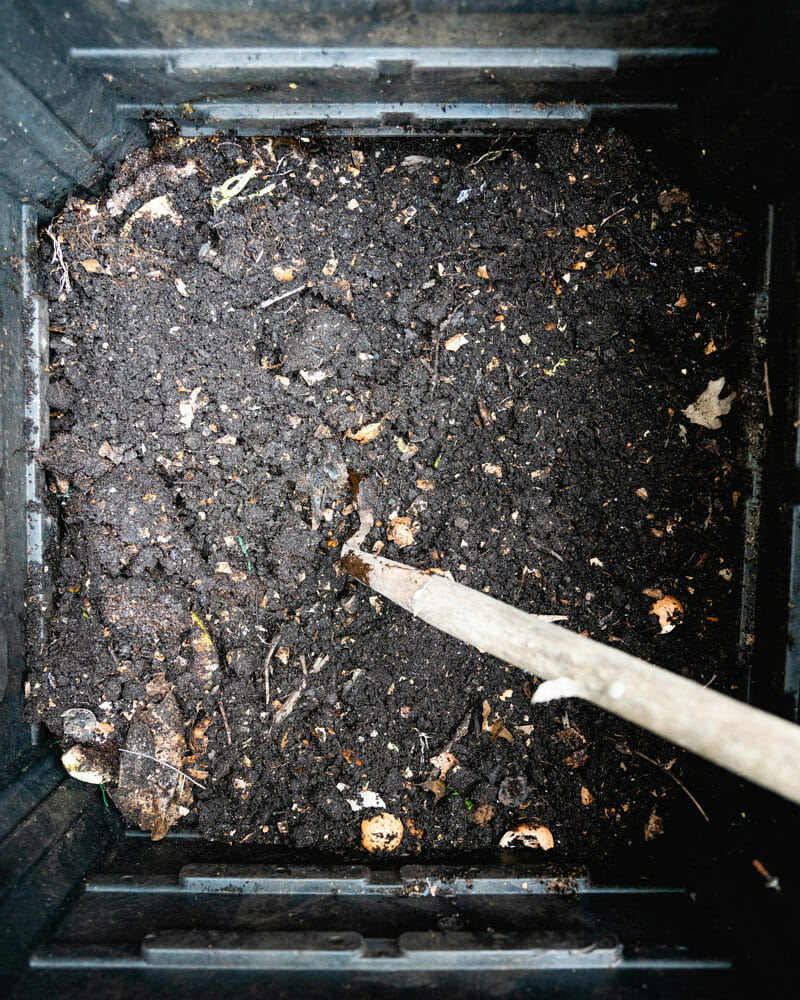Wondering what to do with all those banana peels, onion skins, coffee grounds, and basil stems from all your kitchen adventures? Compost — of course! If you have any sort of green space (or even potted plants!), it’s well worth your time. Compost is one of the best ways to keep your soil healthy and full of nutrients. In addition, by adding most of your food scraps to the compost (and assuming you recycle), you’ll have very little trash!
Why compost?
If you have even a slight interest in how to compost, you should definitely start a pile. I truly love ours (weird, I know). When I finally produced some compost last year for the first time, I thought someone had thrown some dirt into my bin. It took me several seconds to realize that the “dirt” was the compost I had been waiting for! With our square foot garden, we add a couple of scoops of the finished compost after we harvest each square. Using this method, we are able to keep our raised-bed garden nutrient-filled and ready for the next planting. Best of all, it’s completely organic and chemical free! Ready to get going?
How to compost
1. Find a compost bin (and pail).
You can use just about anything to hold your compost – from a plain heap to a box made from scrap pallets. For city-dwellers like us, use a pre-made bin with a locking lid. Here’s the bin we use: Classic Compost Bin $79 If you are wondering about those cool tumbler-style composters, they aren’t really necessary for beginners. They do a great job of speeding up the process – but are probably better suited for an expanded (rather than new) operation. For collecting food scraps in your kitchen, you can also use just about any type of covered container. We use a stainless steel compost pail built especially for the task: it also has a filter to minimize odors. And it looks great on the counter! Stainless Steel Compost Pail with Filter $22
2. Add to the pile: 50/50 greens and browns.
You can add any plant-based material to the pile – the more variety, the better! You want to keep the mix roughly 50/50 “greens” and “browns”. “Greens” are items that will compost quickly – such as kitchen scraps and coffee grounds. “Browns” are heavier and slower to decompose — such as fallen leaves, shredded paper, or sawdust. Don’t worry too much about the mix – it will all turn into compost eventually!
3. Do not add these items!
DO NOT add any meat, dairy, fats, or dog poo to the pile. These will create smells, attract pests, and add nothing good to your pile! We also avoid placing anything cooked into the pile.
4. Mix weekly.
Take a shovel to the pile and move it around about once a week — this speeds up the composting process from months to weeks. It also allows much-needed oxygen to get in and alleviate stinky bacteria. While you are at it, make sure to break up any larger items in the pile. The smaller the kitchen scraps and yard waste, the quicker they will decompose.
5. Enjoy your compost!
All of a sudden, all of that junk turns into dirt! The amount of time varies depending on the time of year, size of pile, and frequency of mixing. Remove some of the compost and add it to your garden beds for the best organic fertilizer your plants have ever seen!
And that’s how to compost!
How about you? Have you tried it? Do you have any tips? Let us know in the comments below.





